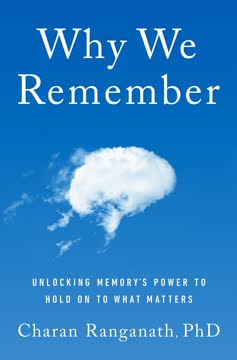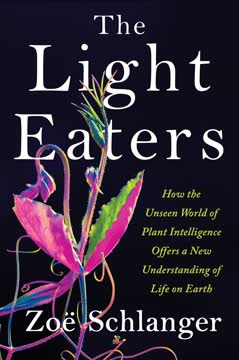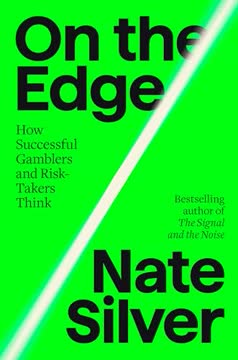ключевых вывода
1. Инженерный метод: Решение проблем с неполной информацией
"Использование эмпирических правил для решения проблем с неполной информацией."
Эмпирические правила необходимы. Инженеры полагаются на эвристики, или эмпирические правила, чтобы направлять процесс решения проблем. Эти правила:
- Воплощают специфические знания (например, коэффициенты безопасности в строительстве)
- Содержат неявные знания, передаваемые из поколения в поколение
- Направляют общий подход к решению проблем
Неполная информация — это норма. Инженеры часто работают в условиях, когда полные данные или понимание недоступны. Эта неопределенность отличает инженерное дело от чистой науки и требует использования эвристик.
Решение проблем — это цель. Инженерный метод направлен на создание практических решений, а не на открытие фундаментальных истин о природе. Этот акцент на применении отличает его от научного метода и позволяет инженерам добиваться результатов даже в условиях неизвестности.
2. Лучшие решения возникают из баланса множества ограничений
"Лучший инженерный дизайн возникает из жонглирования сотнями ограничений и параметров, без которых не существует лучшей версии чего-либо."
Лучшее зависит от контекста. В инженерии "лучшее" не означает идеальное. Вместо этого это наиболее подходящее решение с учетом конкретных ограничений и требований определенной ситуации.
На дизайн влияют множество факторов. Инженеры должны учитывать:
- Культурные силы и общественные ценности
- Доступные материалы и ресурсы
- Ограничения по времени и срочность
- Экономические факторы
- Влияние на окружающую среду
Сравнения между культурами выявляют контекст. Изучая, как разные культуры решают схожие проблемы, мы можем увидеть, как местные ограничения и ценности формируют инженерные решения. Это подчеркивает важность понимания более широкого контекста, в котором происходит инженерия.
3. Принятие неопределенности: Суть инженерных инноваций
"Инженерия проникает в самую суть человеческой природы."
Неопределенность стимулирует инновации. Вместо того чтобы ждать полного понимания, инженеры находят способы работать с неизвестным. Эта способность создавать решения в условиях неопределенности является определяющей чертой инженерии.
Феноменологические подходы важны. Инженеры часто описывают и классифицируют явления, не полностью объясняя их основные причины. Это позволяет находить практические решения даже при отсутствии фундаментального понимания.
Вероятностные методы управляют рисками. Столкнувшись с экстремальными событиями или сложными системами, инженеры используют статистические подходы для прогнозирования результатов и соответствующего проектирования. Это позволяет принимать эффективные решения в условиях неопределенности.
4. Ресурсы формируют инженерные решения тонкими способами
"Технология несет в себе выборы и предвзятости инженеров, которые ее создали."
Материальные ограничения влияют на дизайн. Доступность или дефицит определенных материалов могут существенно повлиять на форму и функцию инженерных решений.
Источники энергии связаны с дизайном. Тип доступной энергии (например, пар, электричество, ископаемое топливо) часто определяет общую структуру и работу инженерных систем.
Знание — это критический ресурс. Накопленный опыт, навыки и понимание инженеров формируют важную основу для инноваций. Это подчеркивает важность:
- Разнообразия в инженерных командах
- Сохранения и передачи знаний через поколения
- Непрерывного обучения и адаптации
5. Инженерное мышление: Проб и ошибок и компромиссы
"Инженерный метод не является научным методом, но очевидно, что наука и инженерия связаны."
Проб и ошибок систематичны. Инженеры не занимаются случайными экспериментами. Вместо этого они используют интуицию, прошлые знания и тщательное ведение записей, чтобы направлять свое исследование потенциальных решений.
Опора на прошлые знания важна. Инженеры "консерваторы" в том смысле, что предпочитают делать постепенные улучшения существующих конструкций, а не начинать с нуля. Этот подход снижает риск и использует проверенные решения.
Компромиссы неизбежны. Каждый инженерный дизайн включает в себя балансировку конкурирующих приоритетов. Инженеры должны решать, как оптимизировать различные характеристики, часто жертвуя одним аспектом для улучшения другого.
6. Наука и математика предоставляют мощные инструменты для инженеров
"Наука снабжает инженеров лучшими эмпирическими правилами — правилами, которые исключают непродуктивные пути и предлагают плодотворные."
Наука информирует инженерию. Хотя инженерия не является просто прикладной наукой, научные знания предоставляют инженерам улучшенные эвристики и сужают поле потенциальных решений.
Математика позволяет прогнозировать. Статистические и вероятностные методы позволяют инженерам принимать обоснованные решения о будущих событиях и поведении систем. Это особенно важно в оценке рисков и проектировании для экстремальных условий.
И наука, и математика — это инструменты, а не цели. Инженеры используют научные и математические знания прагматично, часто в способах, которые могут не удовлетворять строгим стандартам чистых ученых или математиков. Цель — практическое решение проблем, а не теоретическое совершенство.
7. Миф о единственном изобретателе и реальность технологической эволюции
"Рассказывать только историю 'великого человека' скрывает вклад других, кто был необходим для развития технологии."
Инновации — это сотрудничество. Крупные технологические достижения редко являются результатом работы одного гениального изобретателя. Вместо этого они являются результатом накопленных усилий многих людей и часто основываются на существующих идеях.
Производство стимулирует изобретение. Способность массово производить технологию часто так же важна, как и ее первоначальная концепция. Многие "изобретения" на самом деле являются инновациями в производственных процессах, которые делают существующие идеи практичными и доступными.
Недооцененные участники важны. Изучая полную историю технологического развития, мы часто обнаруживаем критический вклад женщин, меньшинств и других, чья работа исторически недооценивалась.
8. Инженерия как отражение человеческого творчества и культурных ценностей
"Инженерия — это творческая профессия, которая превосходит все другие человеческие начинания как демонстрация высшей гибкости человеческого разума."
Инженерия глубоко человеческая. Стремление создавать и решать проблемы является фундаментальным аспектом человеческой природы, очевидным на протяжении всей истории и в разных культурах.
Культурный контекст формирует технологии. Инженерные решения отражают ценности, потребности и ограничения обществ, которые их производят. Это может привести как к положительным инновациям, так и к проблематичным предвзятостям.
Этические соображения имеют решающее значение. Поскольку инженеры формируют окружающий нас мир, они должны бороться с моральными последствиями своей работы. Понимание инженерного метода позволяет обществу участвовать в содержательных обсуждениях о технологическом развитии и его последствиях.
Последнее обновление:
FAQ
What is The Things We Make by Bill Hammack about?
- Exploration of engineering method: The book delves into the unique mindset and approach engineers use to solve problems, emphasizing creativity, flexibility, and working with incomplete information.
- Historical and modern examples: Hammack illustrates his points with stories ranging from medieval cathedrals to soda cans, showing how engineering has shaped the world across eras and cultures.
- Contrast with science: The narrative distinguishes engineering from science, highlighting that engineering is about creating solutions, not just discovering knowledge.
- Demystifying technology: The book aims to reveal the invisible processes behind everyday inventions, helping readers understand how technology is developed and used.
Why should I read The Things We Make by Bill Hammack?
- Demystifies engineering: The book uncovers the hidden creativity and complexity behind engineering achievements, challenging common myths about invention and innovation.
- Informs technological understanding: Readers gain insight into how technologies evolve, the societal and cultural factors at play, and the importance of diverse perspectives in engineering.
- Empowers critical thinking: Understanding the engineering method equips readers to critically assess technological progress and its ethical implications.
- Accessible and engaging: Hammack’s storytelling makes complex concepts approachable, making it valuable for both technical and non-technical audiences.
What are the key takeaways and themes from The Things We Make by Bill Hammack?
- Engineering as creative problem-solving: Engineering is a pragmatic, iterative process that uses heuristics to address real-world challenges under uncertainty.
- Best is context-dependent: Solutions are judged by how well they fit cultural, material, and societal contexts, not by universal standards.
- Human and ethical dimension: Engineering reflects human values and biases, highlighting the need for diversity and ethical reflection in technological development.
- Science and math as tools: While science and mathematics provide powerful heuristics, they do not replace the creative, adaptive nature of engineering.
- Societal empowerment: Demystifying engineering enables society to better engage with and guide technological change.
How does Bill Hammack define the engineering method in The Things We Make?
- Rules of thumb at the core: The engineering method is defined as “solving problems using rules of thumb that cause the best change in a poorly understood situation using available resources.”
- Embracing uncertainty: It is a flexible, creative approach that works with incomplete information, rather than waiting for full scientific understanding.
- Mindset, not a process: Hammack describes it as an attitude or mindset, where engineers combine heuristics and adapt to context.
- Distinct from science: Unlike the scientific method, the engineering method is not a fixed sequence of steps but a pragmatic, context-driven approach.
How does The Things We Make by Bill Hammack distinguish engineering from science?
- Different goals: Science seeks to uncover universal truths, while engineering aims to create specific, workable solutions to real-world problems.
- Methodological differences: The scientific method follows a prescribed process, whereas the engineering method is flexible and relies on heuristics and trade-offs.
- Coexistence of rules: Engineering rules of thumb can coexist and be applied pragmatically, even as scientific theories evolve or are replaced.
- Examples in practice: The book uses examples like medieval cathedrals and the steam turbine to illustrate how engineering operates independently of complete scientific knowledge.
What role do "rules of thumb" play in the engineering method according to The Things We Make?
- Heuristics as shortcuts: Rules of thumb are experience-based, imprecise guidelines that help engineers solve problems efficiently when full information is lacking.
- Three classes of rules: These include encapsulated knowledge (like safety factors), traditional or unarticulated knowledge (like recipes), and problem-solving strategies (like “freeze the design”).
- Context-dependent and flexible: Rules of thumb are judged by their effectiveness in context, not by absolute correctness, and can even contradict each other.
- Foundation of engineering: They are essential for navigating uncertainty and making progress when scientific certainty is unavailable.
What are the three key strategies of the engineering mindset in The Things We Make by Bill Hammack?
- Trial and error: Systematic experimentation, guided by intuition and record-keeping, allows engineers to explore design spaces and learn from failures.
- Building on past knowledge: Engineers use institutional memory, historical insights, and established heuristics to avoid reinventing the wheel and to guide problem-solving.
- Accepting trade-offs: Engineering involves balancing conflicting goals and constraints to find the best compromise for a given context.
- Iterative improvement: These strategies collectively enable engineers to refine solutions over time, adapting to new challenges and resources.
How does The Things We Make by Bill Hammack explain the concept of "best" in engineering solutions?
- Relative, not absolute: “Best” is defined by how well a solution balances constraints and parameters unique to its cultural, material, and societal context.
- Cross-cultural examples: The book uses cases like Egyptian grape juice extraction and Arawak manioc detoxification to show that “best” varies with available resources and needs.
- Bias and inclusivity: Engineering solutions can reflect cultural biases, such as gender-biased crash test dummies, underscoring the importance of diversity in design.
- Continuous evaluation: What is “best” can change as contexts and available resources evolve.
How does The Things We Make by Bill Hammack illustrate the relationship between science and engineering?
- Science as a source of heuristics: Scientific discoveries provide improved rules of thumb that guide engineering but do not dictate solutions.
- Engineering applies creatively: Engineers use scientific knowledge alongside intuition, trial and error, and practical constraints to create workable solutions.
- Example of steam turbine: Charles Parsons combined scientific data with practical engineering to invent the steam turbine, showing science as a tool, not a blueprint.
- Independence from science: Engineering often advances even when scientific understanding is incomplete or absent.
How does The Things We Make by Bill Hammack describe the role of mathematics in engineering?
- Mathematics as a heuristic tool: Mathematics provides powerful rules of thumb, especially through probability and statistics, rather than exact theorems.
- Risk assessment and prediction: Engineers use statistical methods like extreme value theory to predict rare events and design safe structures.
- Pragmatic application: Mathematical models are used as approximations, acknowledging uncertainty and changing conditions such as climate change.
- Not a substitute for creativity: Mathematics supports, but does not replace, the creative and adaptive aspects of engineering.
What historical examples does The Things We Make by Bill Hammack use to illustrate the engineering method?
- Medieval cathedrals: The construction of Gothic cathedrals without mathematics or science, relying on rules of thumb and templates, exemplifies creative problem-solving.
- O-ring invention: Niels Christensen’s intuitive and trial-and-error approach to inventing the O-ring seal demonstrates practical engineering under uncertainty.
- Josiah Wedgwood’s ceramics: Wedgwood’s systematic experimentation and acceptance of trade-offs in creating jasperware highlight the engineering mindset.
- Steam turbine development: Charles Parsons’s integration of scientific data and practical knowledge showcases the interplay between science and engineering.
How does The Things We Make by Bill Hammack challenge common myths about engineering and invention?
- Myth of the lone inventor: The book shows that invention is a cumulative, collaborative process involving many contributors, not just a single genius.
- Engineering as applied science: Hammack argues that engineering is not merely the application of science, but a creative discipline that thrives on uncertainty.
- Linear progress fallacy: The narrative rejects the idea of a straight path from idea to solution, emphasizing the iterative and complex nature of engineering development.
- Highlighting hidden contributors: The book brings attention to overlooked figures, such as Lewis Latimer in the development of the light bulb, to illustrate the importance of diverse contributions.
What are the best quotes from The Things We Make by Bill Hammack and what do they mean?
- “Engineering is using rules of thumb to solve problems with incomplete information.” This quote encapsulates the core of the engineering method, emphasizing pragmatism and adaptability.
- “Best is not absolute, but relative to context.” Hammack highlights that engineering solutions must fit their specific cultural, material, and societal circumstances.
- “Science provides gold-plated, grade A, supremo rules of thumb.” This phrase illustrates how scientific knowledge enhances, but does not replace, the practical heuristics engineers use.
- “Engineering is more closely related to art than science.” The book argues that engineering, like art, involves creativity, intuition, and working with ambiguity.
- “Demystifying technology empowers society.” Hammack’s message is that understanding how things are made enables people to engage with and shape technological progress responsibly.
Отзывы
"Вещи, которые мы создаем" предлагает увлекательное исследование истории и методологии инженерии. Хаммак раскрывает различие между наукой и инженерией, демонстрируя изобретения от соборов до микроволновок. Читатели ценят доступный стиль изложения и увлекательные истории, хотя некоторые находят определенные разделы чрезмерно техническими или повторяющимися. Книга бросает вызов популярным заблуждениям о единоличных изобретателях, подчеркивая важность совместных усилий. Несмотря на похвалы за глубокое понимание инженерного мышления, некоторые рецензенты критикуют позицию Хаммака по вопросу инженерии против науки и его подход к социальным аспектам в дизайне.
Similar Books









